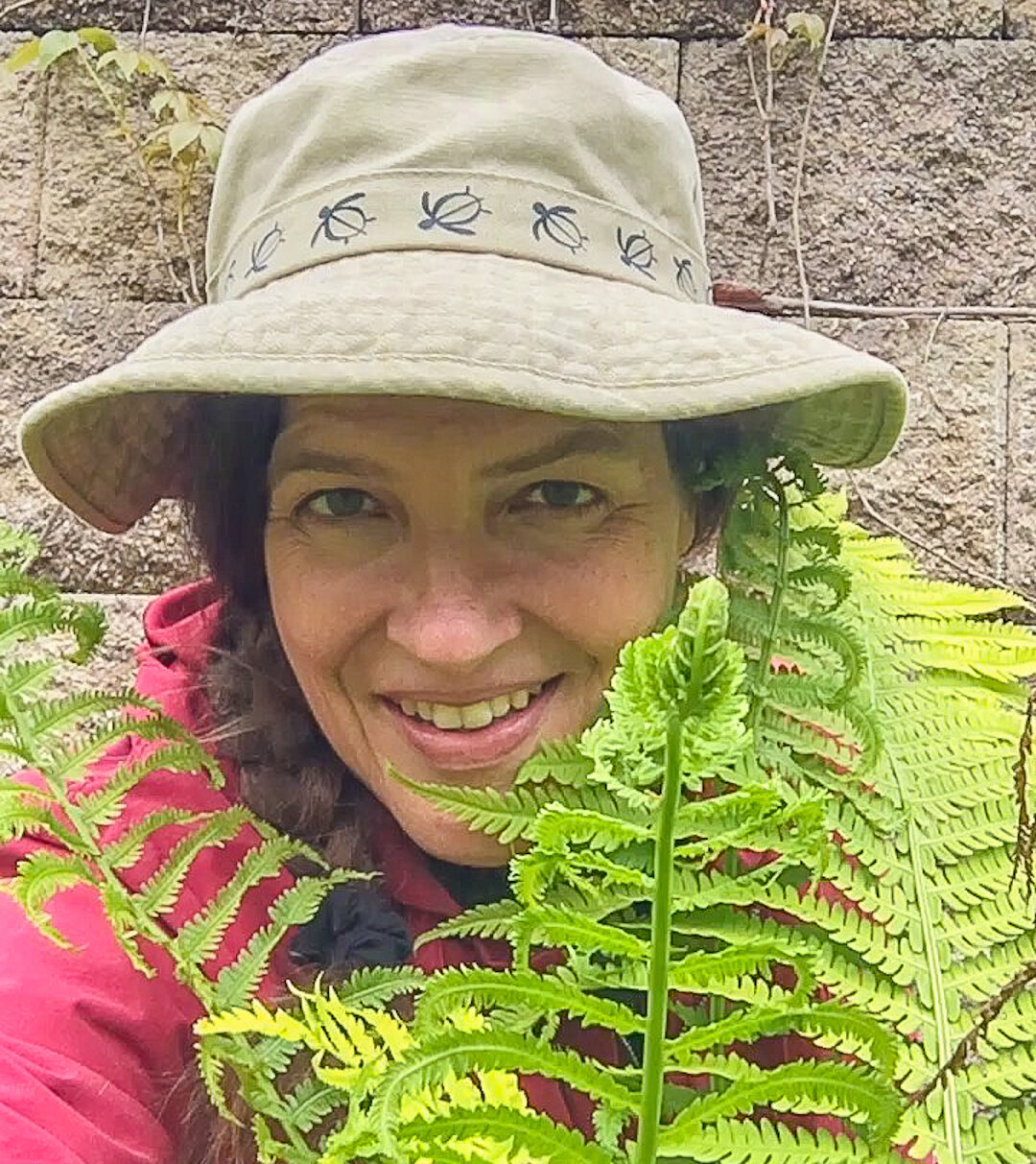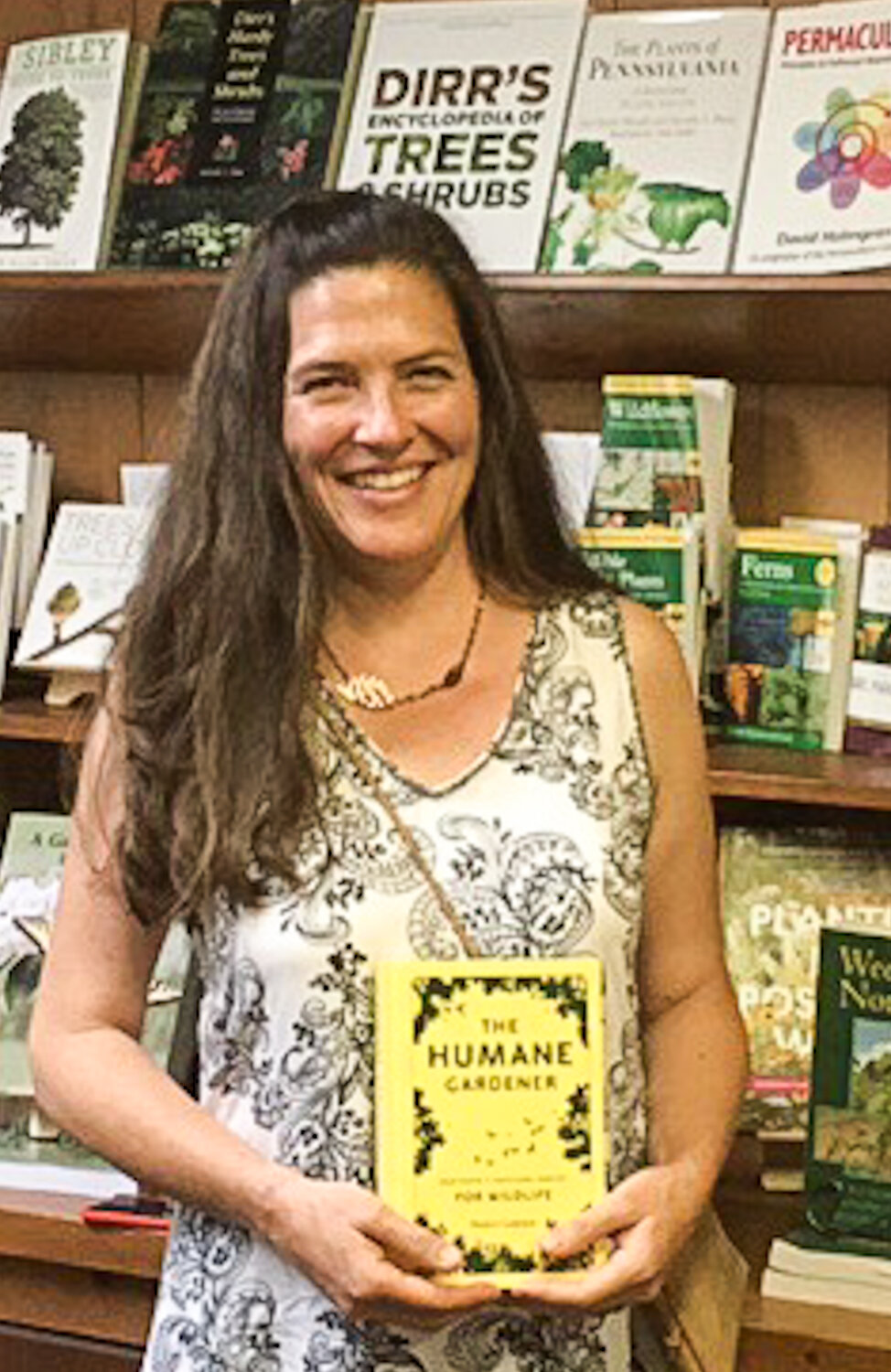The Humane Gardener: Nurturing a Backyard Habitat For Wildlife
A simple plea for respect and compassion
Even Nancy Lawson’s note paper is testament to her love affair.
It was tucked into the book she sent me along with a lovely note. In the bottom right corner of the note is a green garden beetle. Not a cute little rabbit, chipmunk or even a fawn. It’s a beetle. Probably one of those many gardeners pick off their plants and drop into a bucket of soapy water.
Nancy’s proclaimed love has nothing to do with looks. Cute and cuddly is not in her vocabulary. Her relationship with the garden and the many critters that call it home is rooted in compassion.
Nancy Lawson’s book, The Humane Gardener, (Amazon link) is a plea for respect and compassion toward all species. It’s a message gardeners need to hear and describes why and how we should welcome all wildlife to our backyards. It’s as much a gift to gardeners as it is to the birds, beetles, bugs and creepy crawlies that are so vital to the success of our woodland gardens.
If you like The Humane Gardener, you might want to check out Nancy’s latest book Wildscape.
Her love and compassion for wildlife comes from a lifetime of helping animals. As a gardener and editor with the Humane Society for many years, her extensive knowledge of the relationship between fauna and plants in the garden comes honestly.
For more from Nancy Lawson, be sure to check out my post on her newest book Wildscape: Trilling Chipmunks, Beckoning Blooms, Salty Butterflies and other Sensory Wonders of Nature.
If you are looking to purchase the Humane Gardener or any other book for that matter, be sure to check out the outstanding selections and prices (used and new) at alibris books. (see ad below).
“Plants are the solution to everything,” she writes on her website humanegardener.com. “Whether you’re trying to resolve conflicts with wildlife or immersed in efforts to save local fauna, you’ll be more successful if you let plants lead the way.”
Plants and Animals: Making the connection
The intricate connection between animals and plants came to her about 20 years ago thanks to a poop problem. Specifically, mass groupings of Canada geese creating land mines all around lakeside communities.
Nancy Lawson’s, The Humane Gardener, is a plea for respect and compassion toward all species.
In an attempt to find an alternative to mass killings, harassment or oiling eggs to prevent hatching, she read about a solution while working on a Humane Society magazine about resolving conflicts with geese humanely. The solution: Plant native grasses and wildflowers around the banks of the ponds, proved to be the most humane and effective. Removing the delicious turf around the ponds, giving predators easier access to the goslings and making access more difficult for the geese, encouraged them to go elsewhere.
“It was something I read about, and then as the years went by, research continued to confirm what an effective strategy the plant buffers are. I’ve done a lot of my other planting strategies to resolve conflicts since then – such as with deer, rabbits and other mammals,” she explains.
“I often tell this story toward the beginning of my presentations – because at the time, it sort of coalesced so many things for me. I’d long thought lawns were wasteful, and as a relatively new gardener, I was just learning that some plants had much more value for wildlife than others. And so the geese coexistence solutions made me think about how plants can both draw wildlife and resolve conflicts with them,” she explains.
These native plants proved much more beneficial than simply providing a visual barrier to the geese. These same natural barriers also created habitat for butterflies, birds, turtles and frogs. They helped filter pollutants and “played multiple roles in healing the local environment, just as plants do everywhere,” Nancy explains.
“Creating vegetative buffers to mitigate conflicts was still a novel idea in 1999. But in the two decades since I first reported on the issue, some progressive waterside communities have embraced the practise.” (For more see my article on the work of Reyna Matties at Ontario Native Plants)
The Humane Gardener
“There were many rules to follow but not much heart behind them. I learned how to start seeds but not why I should leave their progeny – the seed heads – in place as a food source for birds.”
Nancy speaks out on her own garden transformation
Nancy’s extensive knowledge comes from more than 20 years of gardening on her own two-acre property that she transformed from barren turfgrass to a natural, wildlife garden. Much of her garden is started from seeds way back in the year 2000 when she began to welcome rabbits, deer and small mammals into her garden. As the native plants took off, so did the rare butterflies, native bees and birds.
“All were welcome,” she says on her website. “None were turned away.”
“Common or not, each one of these animals is precious here, with a role to play in our mini-ecosystem: As squirrels helped plant more hickory trees, rabbits created habitat for bumblebees who reuse their old nests. Deer pruned dogwoods and sumacs, inviting cavity-nesting bee moms to lay their eggs in the sawed-off tops. We’ve left as many plants as we can for the animals and in turn the animals contribute in ways we can’t always predict.”
So, she speaks with authority and The Humane Gardener spells it out in such an entertaining, informative and knowledgeable way that it’s hard to put down once you pick it up.
“Common or not, each one of these animals is precious here, with a role to play in our mini-ecosystem: As squirrels helped plant more hickory trees, rabbits created habitat for bumblebees who reuse their old nests. Deer pruned dogwoods and sumacs, inviting cavity-nesting bee moms to lay their eggs in the sawed-off tops. We’ve left as many plants as we can for the animals and in turn the animals contribute in ways we can’t always predict.”
Nancy’s easy writing style, no doubt the result of her journalism background, adds to the enjoyment, but also explains one of the most enjoyable aspects of the more than 200-page hardcover book: The human-interest vignettes throughout the book that profile the work of home gardeners across the United States and Canada.
She breaks up the regular chapters of the book with a 10-15 page profile on gardeners, illustrated with photos of their gardens and the insects, butterflies and birds that call their garden home.
There is the story of Dennis Mudd, who gardens on his two-acre suburban site adjacent to 5-acres of canyon property he purchased in California where he has transformed a typical turfed property into a plant lovers dream where he shares it with everything from raccoons, rabbits and moles to hawks, Great Horned Owls and dusky-footed woodrats. And, of course there are the rattlesnakes that he has to keep an eye out for in the garden.
And there is the story of Jennifer Howard, a wildlife rescuer and activist who gardens in a small backyard sanctuary in Innisfil, Ontario, Canada. In her garden near Lake Simcoe, Jennifer works to protect the wildlife being threatened by the suburban creep that is threatening important wetlands. Jennifer has added ponds in her backyard to create more habitat and lobbied local government for turtle crossing signs.
She’s just one of many examples of how gardeners are recognizing the importance of many of the fauna that has traditionally been ignored or, even worse, eliminated because they did not meet the gardeners vision on what their garden should become.
The Humane Gardener is not the first book to encourage a new, more thoughtful approach to gardening, but it is certainly a groundbreaking one that brings together ideas and practises with vignettes of gardeners who are putting these approaches into action everyday in their gardens.
Book offers a New Kind of Dream Home
The book opens with a chapter entitled: A New Kind of Dream Home where she urges gardeners to adopt a new planting style that eschews turfgrass and calls for a landscape of native plants. But she doesn’t pretend for a moment that she was not caught in the same trap most gardeners find themselves in at the beginning of their journey.
“Though my husband teased me about my addiction to ‘flower porn,’ I also read these publication for the articles, learning about everything from proper spacing… to the best time to trim back dead perennial stalks. But inspiration eventually turned into frustration, and it became clear that Will (her husband) had a point about the emptiness of the endeavor.”
“There were many rules to follow but not much heart behind them. I learned how to start seeds but not why I should leave their progeny – the seed heads – in place as a food source for birds,” she writes.
And so begans her quest for what real beauty meant to her.
“I developed an almost innate sense of how to keep voluptuous cottage garden flowers thriving but had little knowledge of trees, shrubs and other plants critical to wildlife. Most wasteful of all, I looked beyond my borders for beauty, rather than taking the time to understand the potential already there in my own backyard.”
In the remaining chapters, Nancy talks about “letting go” by letting nature guide your garden along its path. This approach leads to a chapter on creating a family-friendly backyard, not necessarily for the humans that use it, but for birds and mammals that depend on it to raise their own families.
There are chapters on how to share the fruits of the garden with birds and forest creatures like deer, ensuring our gardens are safe for wildlife and rejoicing in death and decay in the garden for the life that rises out of it. This chapter focuses on the importance of leaving dead and dying trees in the yard for woodpeckers, bluebirds and nuthatches to create homes. She talks about the importance of decaying logs left in the garden and the insect life they attract. The salamanders, snakes and birds that then move in to feast on the insects.
Nancy’s approach is not to preach, not to judge, but to simply point out how we as gardeners can change the way we approach our land, our challenges and our vision to include, and maybe even prioritize, the birds, bees, butterflies, rats, snakes and bugs in our gardens. To make nurturing a fledgling as important as raising a favourite flower.
Nancy informs me that she is working on a new book. “It’s kind of an extension of the ideas in the first book, but I’m looking in more detail at how the animals and plants perceive the environment around us through their senses – and how some of our practices in gardening/landscaping get in the way of their ability to sense their world and each other.”
If her new book is anything like The Humane Gardener and reflects the same dedication, knowledge and commitment to excellence, the new book will only add another chapter to the outstanding work she has already accomplished and the influence she has had on so many gardeners looking for more than just a beautiful lush garden to call paradise.


